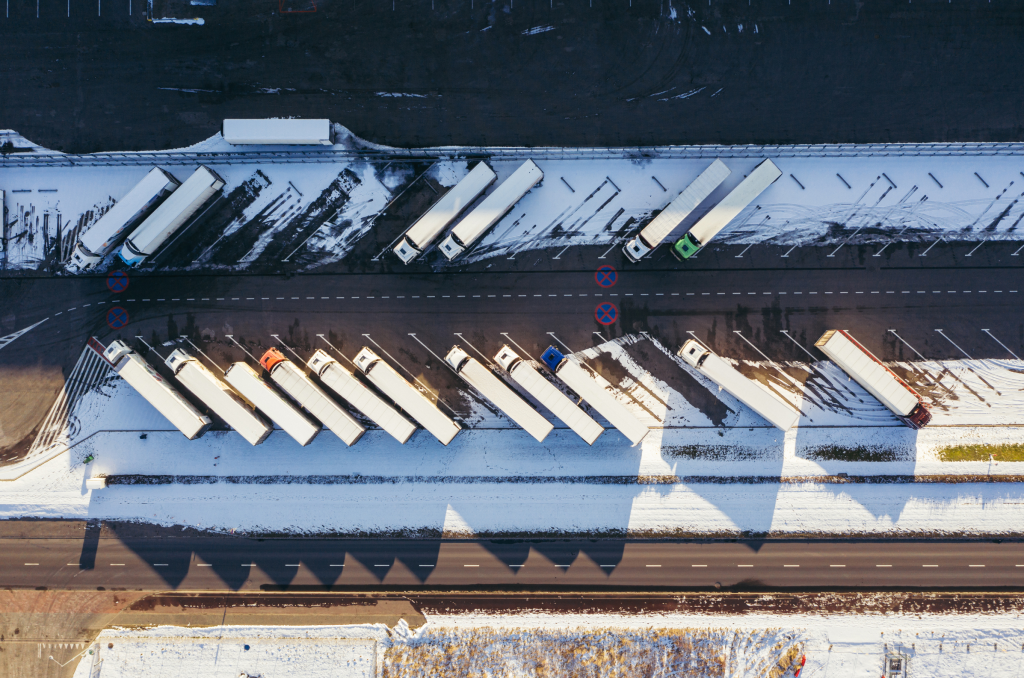Here’s what operational excellence looks like for modern DTC brands that ship perishable products, from the second a customer clicks “buy” to the moment the box lands at their doorstep.
Every Step From Click to Doorstep
1. Order Captured → Instant Optimization
The moment an order is placed, intelligent systems should evaluate packaging, refrigerant, carrier, and service level—dynamically—based on real-time weather forecasts, product requirements, transit times and cutoff windows.
2. Carrier Chosen Intelligently
Diversifying your carrier strategy is crucial when avoiding delays and bottlenecks. Logistics systems must weigh live rates, lane-level on-time performance, weather events, and delivery blackout dates. This ensures each order gets the best chance of arriving on time and intact.
3. Pickup Triggered Automatically
Every minute counts in cold-chain. Fulfillment systems should automatically schedule pickup from the nearest node with available inventory—eliminating hold time on docks and protecting the temperature sensitive products.
4. Hub-Level Intelligence
Smart systems don’t just track packages—they monitor carrier hubs. If a hub is slowing down, logistics platforms should reroute shipments or upgrade service levels before delays cascade.
5. Actively Managed Last-Mile
Leading systems monitor for stalled scans, missed attempts, and weather disruptions—and reroute or escalate in real time to protect the order (and the customer experience).
6. Proactive Exceptions & Alerts
Things will go wrong. But great logistics systems don’t panic; they follow protocol. Hold for safe conditions, reship proactively, upgrade service, or notify the customer before they need to ask.
What High-Performance Cold-Chain Logistics Requires
Tech-Driven Carrier Selection
Algorithms (not guesswork) should determine the best carrier option for every order by factoring in:
- Delivery zone mapping to understand transit range and timing
- Historical on-time performance by lane, not just by carrier
- Live rate shopping across national and regional carriers
- Weather and blackout rules to prevent avoidable delays
Packaging & Refrigerant Intelligence
Advanced logistics systems should calculate the exact refrigerant and insulation needed automatically for every shipment. This real-time optimization reduces waste, protects product integrity, and cuts unnecessary spend.
Key capabilities include:
- Dynamic refrigerant calculations based on product type, transit time, and destination climate
- Automatic selection between gel packs, dry ice, or hybrid solutions depending on regulatory limits and delivery timelines
- Seasonal and lane-based adjustments to insulation and refrigerant volume.
Real-Time Insights
The best systems give ops teams visibility into:
- Spoilage trends by region, product, and carrier
- Hub-specific delays and degradation
- Heat map-based exception alerts
- Order aging and failed scan detection
Last-Mile Orchestration
Leaders actively intervene in the last mile—rerouting, escalating, or expediting before the customer’s delivery window expires.
Strategic Carrier Mix
Diversifying carriers isn’t optional. Smart cold-chain brands blend:
- Nationals for reach and predictability
- Regionals for speed and flexibility
Seamless System Integration
Modern logistics requires modern connectivity. Platforms should hook directly into OMS, eCommerce, and warehouse systems via APIs—not manual CSV uploads. Real-time visibility should flow across the stack.
Cold-Chain KPIs that Actually Matter
Track performance at the intersection of operational cost and customer experience:
- On-time delivery rate, by carrier, lane, and product
- Cost per order, with speed vs. spend analysis
- Refrigerant and packaging spend by lane and climate zone
- Spoilage %, with root cause and dollar impact
- Customer tickets tied to delivery issues
Questions to Test Your Provider
Ask your logistics partner:
- How quickly do you detect delayed scans or stalled hubs?
- What’s your playbook when a carrier lane degrades?
- How is refrigerant logic handled by order, product, and region?
- How does your platform integrate with our service team?
- What’s the escalation process when a hub fails?
Final Thoughts
Cold-chain logistics should never be static. It’s an evolving system that protects margin and customer trust. Treat it like a product: test, measure, iterate. Brands that take on this mindset with their logistics ship their cold products reliably, scale faster, and sleep better when the forecast hits 98°F.
Need help with your logistics? Let’s chat: partnerships@gripshipping.com



